Everything is connected #3
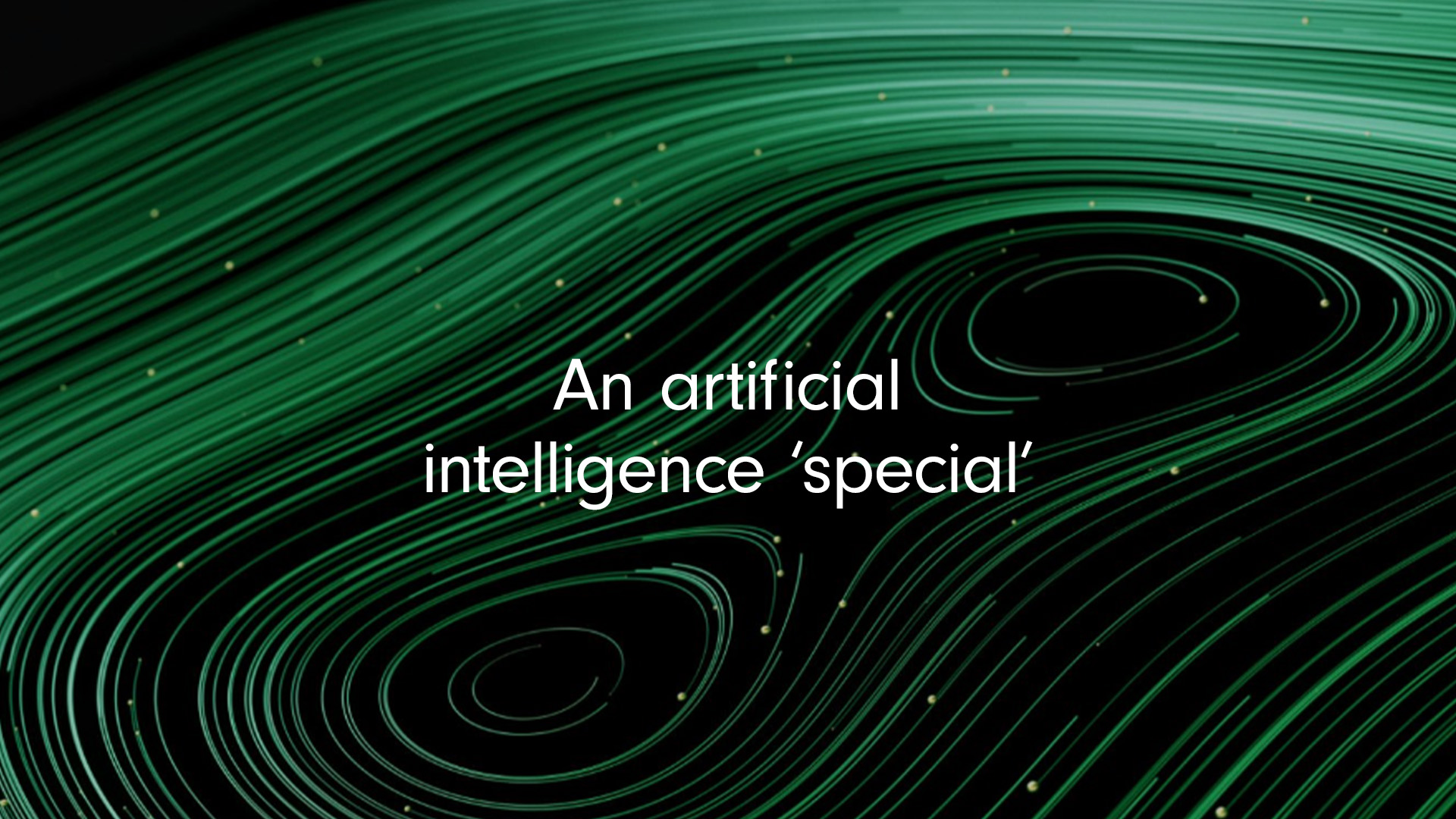
Artificial intelligence – everyone is talking about it:
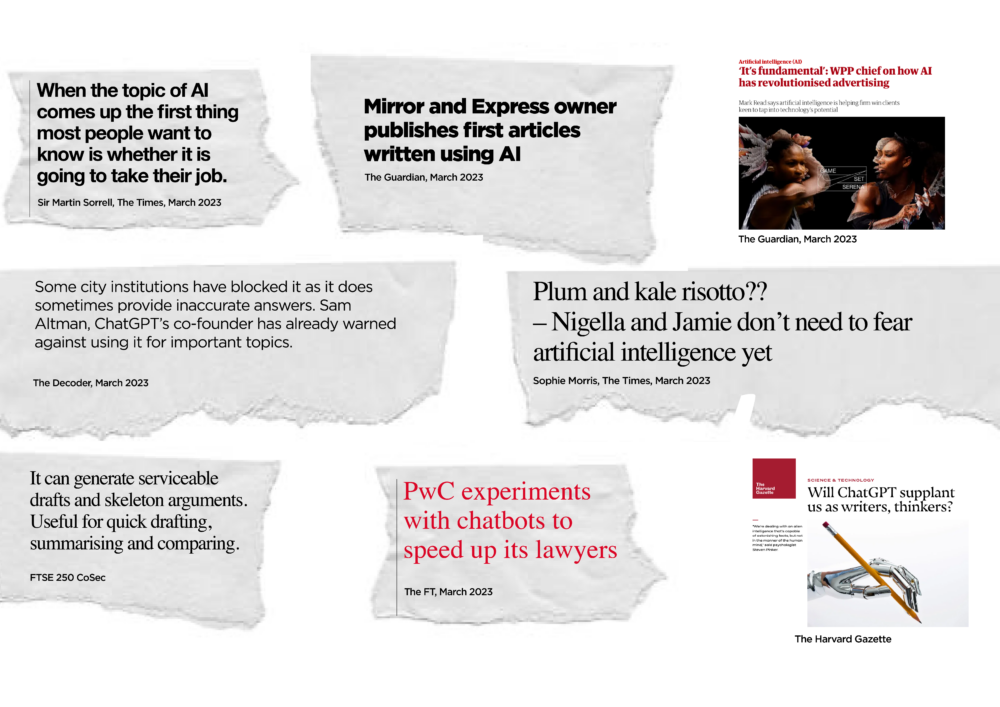
What AI can (and can’t) do for creativity
We have only recently started to embrace AI in our creative thinking and processes.
Generative AI is surprisingly clever and addictive. Creatively it allows you to quickly see what does and doesn’t work. However, it only takes you part of the way, albeit quickly. It leaves plenty of room for design teams to challenge, develop and hone.
At one end of the scale AI is a big move on from regular search engines as it generates human-like responses (so it’s more of an answer engine than a search engine). At the other end its capabilities seem endless – you can use it to generate views, personalise and break new creative ground.
However, users should also be aware that the adage ‘garbage in, garbage out’ applies. You’ve got to get good at ‘prompting’ when working with AI.
Early signs are that human creative talent still rules but AI looks to be an exciting addition to the Gather team.
Co-creating with AI
Over the past four months we’ve been having fun co-creating with OpenAI’s ChatGPT which can understand and generate human-like text responses, and DALL-E for image generation.
Here are a couple of the tasks:
Task 1
First of all we wanted to see how DALL-E reacted to a logo design task. While the results don’t represent DALL-E’s full capabilities, it’s interesting to see how the model processed our request.
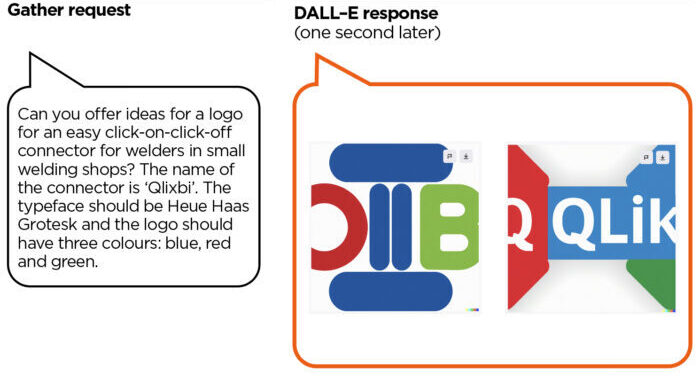
Next we asked ChatGPT to help us create the tagline for the product.
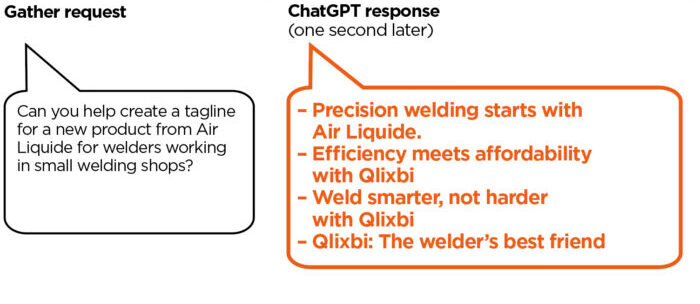
For reference here’s the actual Qlixbi logo and strapline designed by Gather:
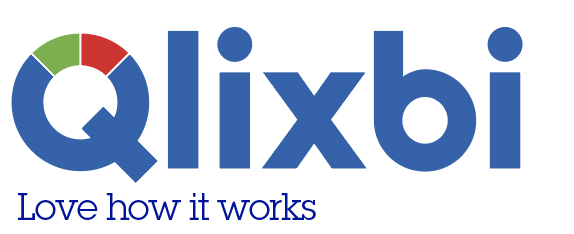
Gather comment
The DALL–E generated logo options are helpful, although you can see there’s still a lot of (human) work to do to arrive at the final logo.
ChatGPT produced lots of strapline options – its key word suggestions: efficiency, affordability, smarter not harder are better than lucky dips. However, they miss the wider offer and emotional connection we want to get. Welding tends to be a tonally pragmatic, ‘macho’ and unemotional category. So, to make sure the final identity stands out and disrupts, we chose to introduce words like ‘love’.
Task 2:
The second task was about creating an appropriate tone of voice for a Chair’s letter within an annual report.
We started with an existing Chair’s statement from a 2022 report in the energy exploration sector – it’s classically corporate.
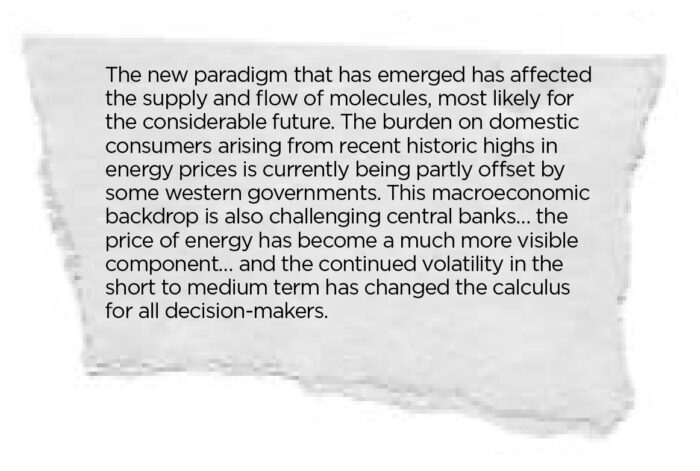
We asked ChatGPT to take the extract and to rewrite it developing a more friendly and accessible tone.
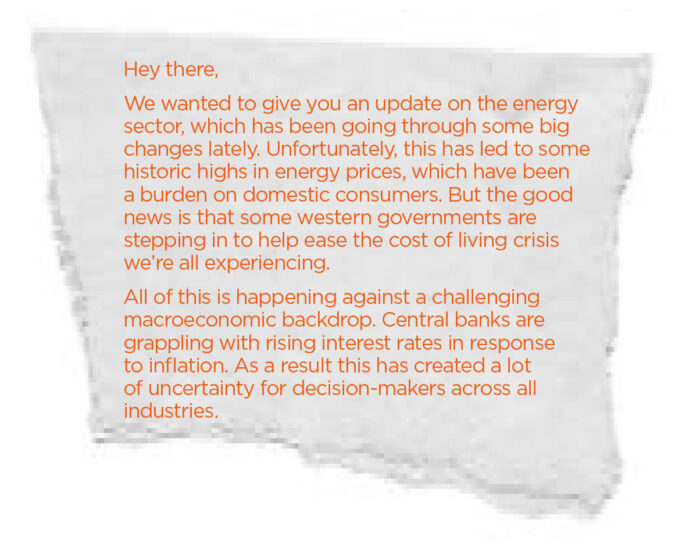
Gather comment
We think the way your business talks should be consistent across all stakeholder communications. And this includes investors. A good example is AO plc (Appliances Online). They are super friendly to their customers, and they find ways to bring the same tone through to their corporate reporting. Everyone likes consistency and it helps build your brand and authority. (As an exercise consider using AI to edit the tone of voice in your corporate reporting so it’s closer to how you speak to your customers – see if people recognise something has changed).
If you want to see another example of ‘friendly and accessible’ in an Annual Report, look no further than Warren Buffett’s Chair’s letter for Berkshire Hathaway. He writes it as if he was writing to his mother.
“A very minor gain in per-share intrinsic value took place in 2022 through Berkshire share repurchases as well as similar moves at Apple and American Express, both significant investees of ours. At Apple and Amex, repurchases increased Berkshire’s ownership a bit without any cost to us. The math isn’t complicated: When the share count goes down, your interest in our many businesses goes up. Every small bit helps if repurchases are made at value-accretive prices. Just as surely, when a company overpays for repurchases, the continuing shareholders lose.”
Here are two further examples of AI-generated creativity in the wider world.
It’s fair to say that both examples are using AI to its full potential, and are way beyond the simple ‘request’ and ‘response’ formula offered by ChatGPT and DALL–E.
Jos Avery is currently courting controversy and Nike are driving new ways of analysing sport.
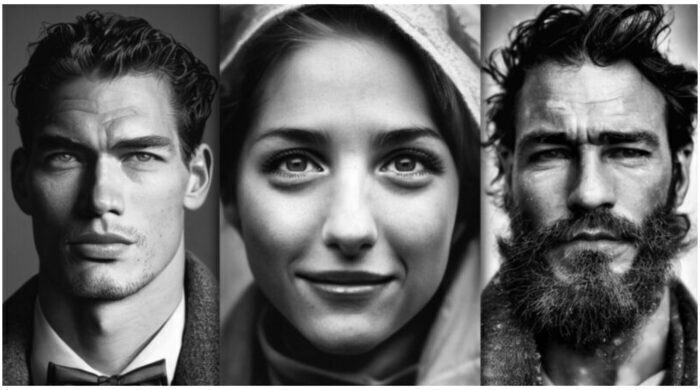
Jos Avery ‘coming clean’ on his AI-generated photographs
Jos Avery has been using Midjourney, an AI-powered image synthesis tool similar to DALL-E, to generate photorealistic portraits of people which many have assumed are real.
He says he is conflicted because the work is fake in its origins, but the skill required to manipulate the final results is highly artistic.
Here, AI is contributing to a debate about authenticity versus deception. The Jos Avery incident seems to highlight that deception has always been part of photography.
Read the article here:
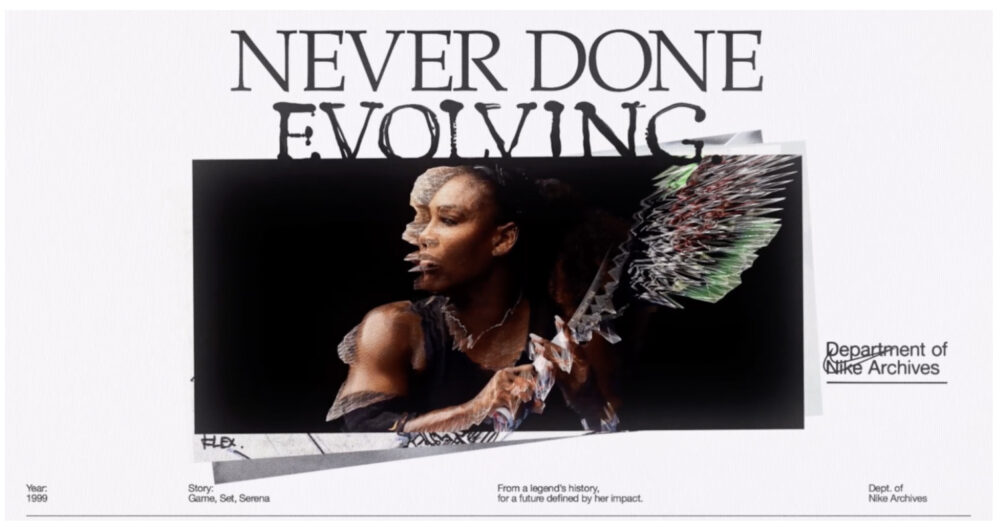
Nike’s match of the ages
AKQA’s work with Nike features Serena Williams playing her former self.
It uses an AI technique developed by Stanford University to create a match-up between Serena Williams from her first Grand Slam at the US Open in 1999 versus her most recent at the Australian Open.
Having modelled each era’s playing style based on archival footage from 5,000 matches. The AI-generated result shows how Serena Williams has consistently found new ways to evolve her game. The idea to use AI to underscore Nike’s brand seems like a brilliant use for this technology.
Read more here:
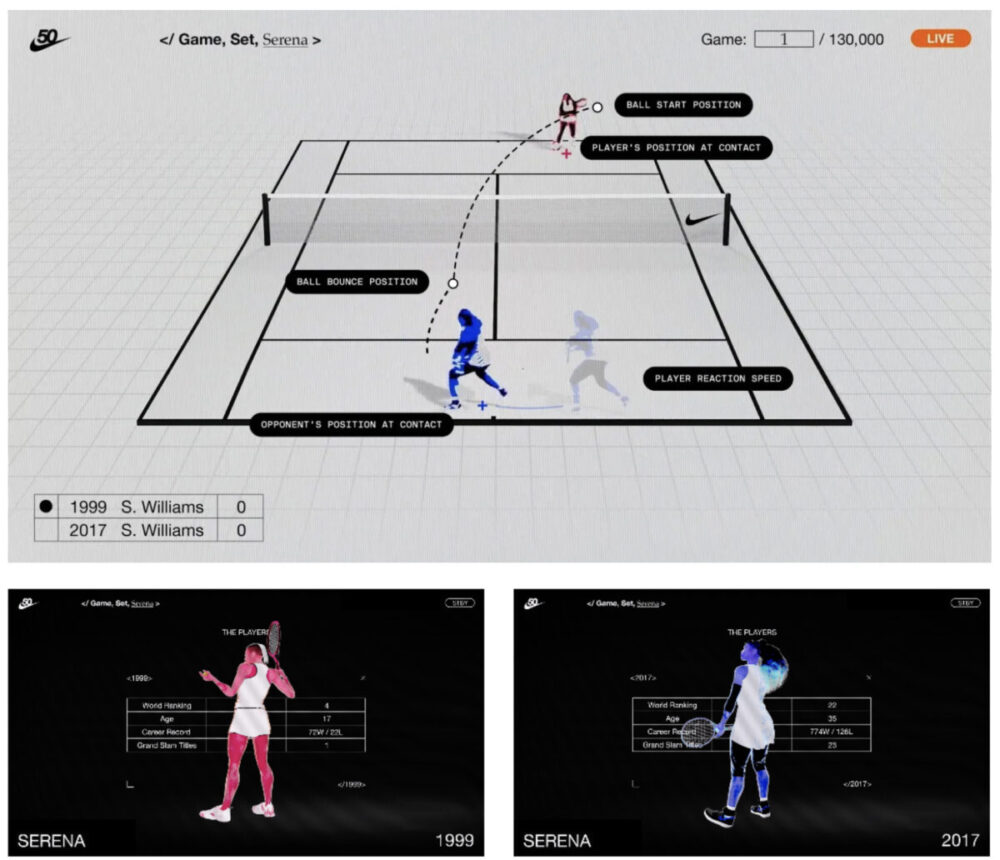
Conclusion:
Tools that remove drudgery and enable critical thinking are valuable.
As creatives and as creative companies we know our thresholds for boredom. We know we can spot a bad idea, or an average design, or a sloppy bit of writing. Humans will always like new and there will always be a quest to be original. Very few musicians, we imagine, actually set out to make ‘muzak’.
ChatGPT and other generative AI models can help us do more of what really matters – for us that means using our talent to create. For a law firm it means you no longer need to spend hours doing the drudgery of a contract. The opportunities are endless. And as most of the AI tools are prototypes, the revolution hasn’t really started yet.
So what have we learnt?
There has been talk about ChatGPT replacing jobs. Job patterns have always shifted with technology. Rather than take jobs away, it would seem that ChatGPT will place a greater premium on authentic creativity. Which remains a human preserve.
The outputs we will demand of AI can only be as good as our inputs, as evidenced by the skills prompt engineers bring to this subject. (Job creation rather than elimination).
Generative AI and ChatGPT can be part of the creative process and, in the right hands, can help us to produce better creative outcomes. We think it’s likely to have the same impact on the creative industry as computers, the internet and iPhone.
PS: Just for fun we asked ChatGTP the same question. Here is the response, unedited:
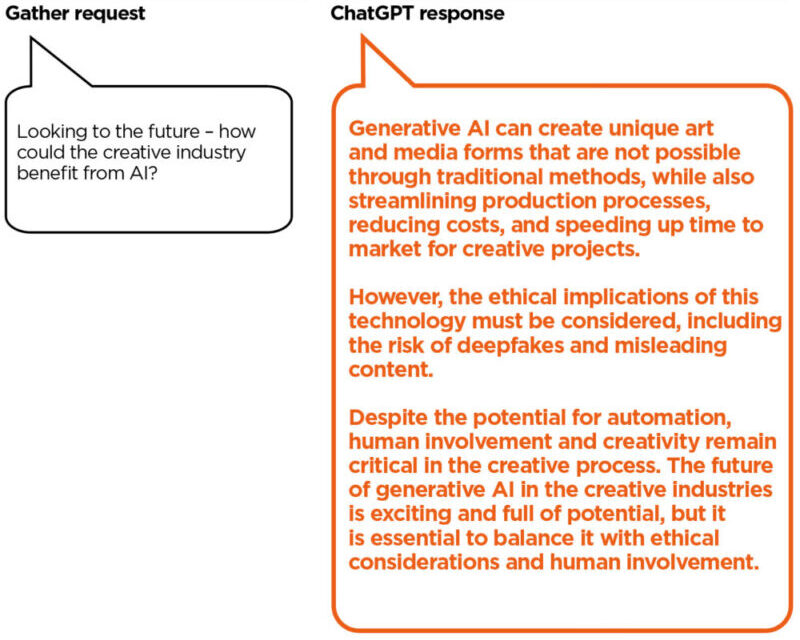
If you’d like to discuss this, or any other subject, please get in touch with Richard Orr, Executive creative director at richard@gather.london alternatively 07973166773. We’d love to know what you think.